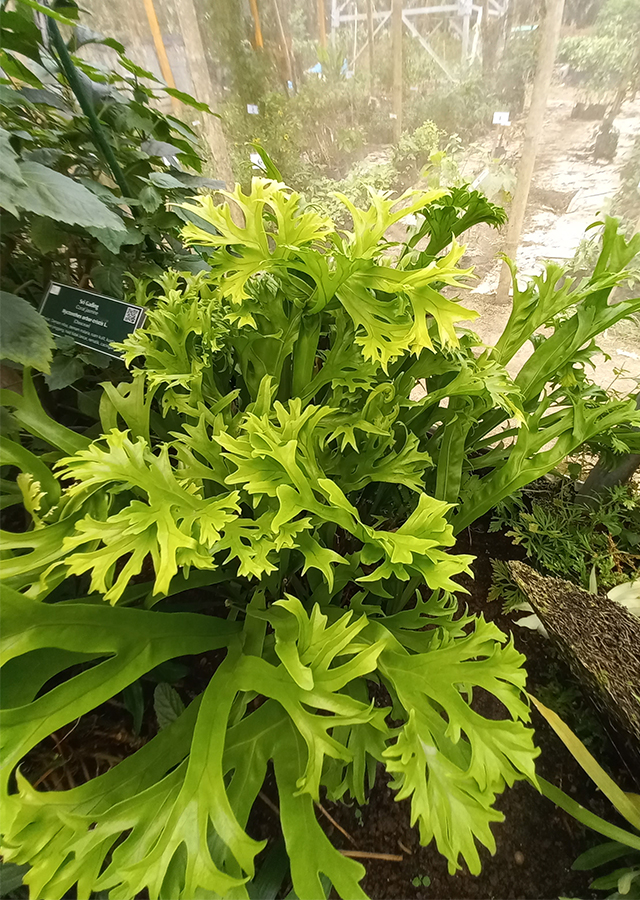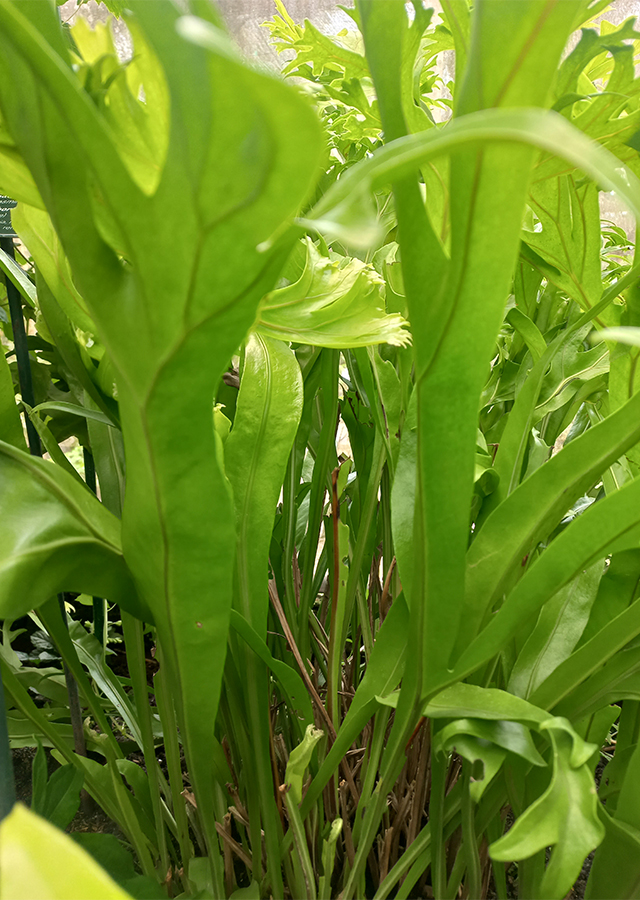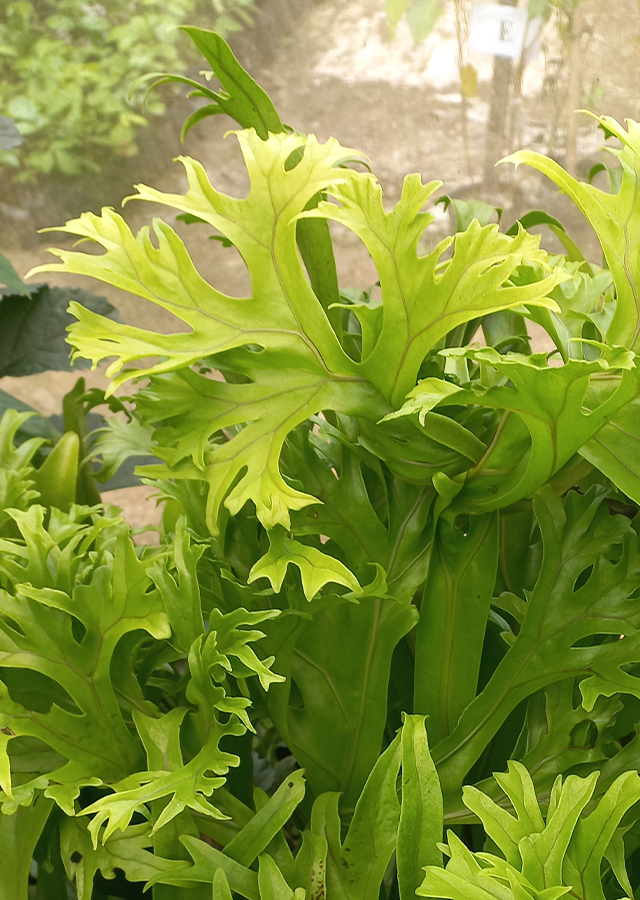Fish-tail Fern
Microsorum punctatum (L.) Copel.
Polypodiaceae
Location in our garden
Green House



Synonym
Phymatodes linguata (Sw.) C.Presl
Pleopeltis punctata (L.) Bedd.
Polypodium punctatum (L.) Sw.
Habitus
Fern. Epiphytic, rhizomatous fern, able to grow up to 60 - 80 cm tall and 20 - 30 cm wide
Part Used
Leaves
Rhizome
Growing Requirements
Need Shade
Drought Resistant
Habitat
Forest
Overview
M. punctatum is widespread all over the tropics and subtropics of the Old World, from west tropical Africa and India, throughout South-East Asia, to southern China, northern Australia and the Pacific. It is said that it has a high potential as cut foliage and large-scale cultivation in the Philippines is being promoted. This cultivar is grown for its ornamental foliage. It is suitable for container plantings and may be placed indoors or outdoors.
Vernacular Names
Xing jue (Chinese), Dogum moruh (India), Keluwah (Malay), Eawawan (Philippines), Krapok sing (Thai).
Agroecology
M. punctatum is usually epiphytic on tree trunks and branches, but can also be epilithic or terrestrial in various types of forest, sometimes in savanna but also in wet locations in streambeds, most common in lowland but occurring up to 2800 m altitude. Prefers semi-shade and moderate amount of water. This cultivar is fast-growing and requires little maintenance. Plant specimens 0.5 - 0.6 m apart in fertile, well-draining soil that is acidic to neutral (pH 5.5 - 7). Keep the soil consistently moist, but not soggy. It grows best in a humid environment.
Morphology
- Rhizomes - creeping, white waxy, without sclerified circumvascular sheaths; scales pseudopeltate, ovate to triangular, 1.5-8 mm × 0.5-3 mm.
- Leaves - simple, subcoriaceous; petiole 0-12 cm long; lamina ovate to linear-elliptical, 10-175 cm × 1.5-15 cm, base decurrent into a wing along the petiole, margin entire to irregularly lobed, apex rounded to acuminate, forking in various segments; connecting veins forming several equally sized areoles between two adjacent veins.
- Spores - Spores occur on the frond underside in small, dark brown spots.
Cultivation
- Propagate by spores, rhizome cuttings or dividing plants.
- Spores collected from the frond underside are dried in an envelope and then germinated on moistened peat moss in a dim, humid spot. Germination may require a few months to occur.
- Rhizome cuttings should be buried not deeper than 5 cm. Spores are sown on a sterilized medium and kept in a very high relative humidity. Sporophytes are transplanted in groups when they are about 1 cm tall and again transplanted individually when they are taller than 3 cm.
Chemical Constituents
Alkaloids, flavonoids, terpenes, phenols, polyphenols, sterols, anthraquinones, phenolics, saponins, and terpenoids.
Traditional Medicinal Uses
- Decoction of plant used for coughing fits.
- Leaf juice used as purgative or enema.
- Leaf juice also used as diuretic and for healing wounds.
- Used in traditional medicine of Nicobarese tribes.
- Tribal people of the Palani hills from South India use the plant as application to cuts and wounds, and as anti-inflammatory.
- Tagin and Galo tribe of Arunachal Pradesh use paste of leaves for anti-inflammatory properties.
Part Used
Reference Sources
- StuartXchange. Philippine Medicinal Plant. 2020. Microsorum punctatum. http://www.stuartxchange.org/ClimbingBirdNestFern. 23-08-22.
- National Parks. Flora & Fauna Web. 2021. Microsorum punctatum. https://www.nparks.gov.sg/florafaunaweb/flora/1/5/1552. 23-08-22.
- Plant Resources of South-East Asia. 2016. Microsorum punctatum. https://uses.plantnet-project.org/en/Microsorum_(PROSEA). 23-08-22.

